Genre: Survival Horror Developer: Nextech Publisher: Capcom Players: 1 Released: 1997
Those of us who were gaming in the mid-’90s remember a time when there weren’t a hundred Resident Evil titles across multiple platforms. The original game was a 1996 PlayStation exclusive that redefined what survival horror was and established a billion-dollar franchise that continues to this day. It was also one of the games that Saturn fans really wanted on their console, and it was frustrating to see Capcom heavily support the Saturn but deny owners the crown jewel of its 32-bit catalogue. Personally, I had a PlayStation, so I was able to enjoy all of the zombie madness from day one, but it still would have been great to have had a copy of Resident Evil on my Saturn shelf. Capcom had always been good to my Saturn, giving me the best versions of all of its 2D fighters, the excellent Puzzle Fighter, and even a Mega Man game. When its most anticipated release of the 32-bit era arrived, however, I was denied.
Fast forward a year, and while Resident Evil fans were eagerly awaiting the sequel, which was well under way and slated for a May 1998 release, Saturn owners finally got to play the first game. Thankfully, Capcom didn’t just photocopy the port for a quick cash grab. Rather, it spruced things up enough to make the Saturn version an instant purchase for those who hadn’t played it already and worthy of a second look from those who had. Initially, I was skeptical about it coming out so late, particularly with the sequel on the horizon. For all of Capcom’s promises, it was still essentially the same Resident Evil we had already beaten.
Well, better late than never, I guess. To be honest, my cynicism kind of subsided upon the realization that this release meant that the Resident Evil franchise was now coming to the Saturn (yeah, we all know how that turned out). Still, this conversion featured enough improvements to make me a fan, and it showed that Capcom recognized its slight against Sega consumers enough to release this Resident Evil: Mea Culpa Edition. Its effort had some lasting effects too, expanding the fanbase and creating the precursor to the now fan-favorite Mercenaries mode that’s still a star feature in each installment.
The core Resident Evil game remained unchanged here, corny dialogue and all. The S.T.A.R.S. Alpha Team headed off into the Arklay Mountains to find out what happened to its sister Bravo Team, which went there to follow a lead about the horrible mutilations and killings plaguing Raccoon City. Players assumed the role of either Chris Redfield or Jill Valentine and explored the horror-filled mansion to uncover Umbrella Corp.’s sinister plans. Capcom gave their adventure a new coat of paint for the Saturn, adding some texture to enemies like the crows and cleaning up some other creatures and locales. Most of the visual changes were welcomed, but overall they were a bit of a mixed bag though since some weren’t quite as dazzling. For instance, the water effects in the shark scene looked far worse than they did on PlayStation, and the vats in the Tyrant lab were reportedly broken because the Saturn couldn’t render translucent objects well enough to include them. Whether this was a question of hardware limitations or development issues is unclear, but it was quite apparent at the time. On the bright side, Capcom toned down its censorship of the gore, showing more of it during character death scenes and when foes were killed. The Japanese version was the most unfiltered, but there was more than enough to go around for the North American and European releases.
The most notable addition to the Saturn port had to be its new game mode called the Battle Game, a 15-room dash to eliminate enemies that unlocked upon finishing the main game. The mode had some interesting additions, including a zombified Wesker and a terrifying golden Tyrant, and it moved the hunters underground and replaced them in the house with a new creature called the tick that was hard to hit and capable of decapitating players at close range. Chris and Jill even got new alternative outfits for the Battle Game so they could engage Umbrella’s horrors in style. Best of all, the game could save players’ scores and rankings to backup memory so that they could try to beat their best times. Chances are that the Battle Game was where people spent most of their time because it was just so darn much fun. Though normally accessed upon completing the main game, Capcom wisely made both this mode and the alternative outfits accessible via cheat codes from the start screen.
Of course, as with any of the early Resident Evil games, the tank controls remained as controversial on the Saturn as they did on the PlayStation. Honestly, I didn’t mind them that much, especially with the Saturn’s excellent D-pad (specifically the Japanese pad). The controls weren’t really much of an issue; if you played the PlayStation games then you knew what to expect, and I kind of feel the Saturn controller made them less problematic.
In summary, Resident Evil on the Saturn was a solid conversion that is worth checking out for the Battle Game alone. Like just about all North American Saturn games, it’s gone up significantly in price over the last few years, making the Japanese version more affordable. The difference nicely works in the buyer’s favor since the Japanese version is the fully uncensored one anyway. Whether it’s to take a trip down memory lane or to experience the new stuff, Resident Evil on the Saturn still a blood-curdling good time.
SCORE: 8 out of 10

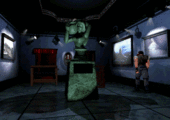
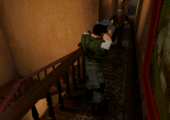
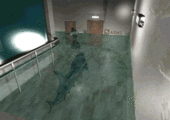
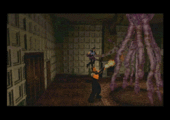
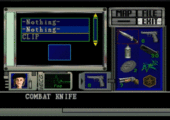
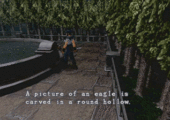
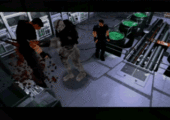
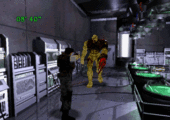
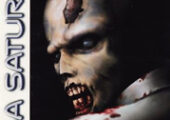
Recent Comments